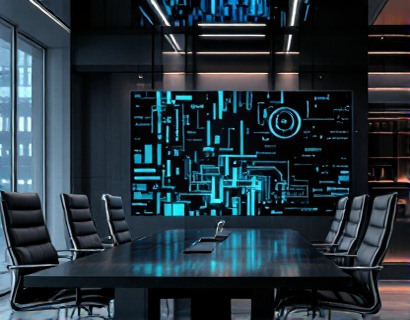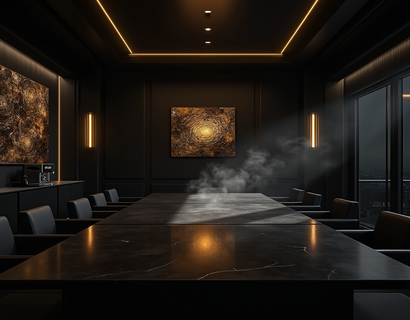Maximizing Architecture Firm Efficiency with Advanced Software Solutions
In the dynamic field of architecture, the integration of advanced software solutions has become pivotal in transforming firm management. These technologies optimize internal processes, streamline management tasks, and significantly enhance the user experience. By leveraging sophisticated tools, architecture firms can allocate more time to creative endeavors, ensuring that the core mission of designing exceptional spaces remains at the forefront. This article delves into the various ways advanced software solutions are revolutionizing the architecture industry, focusing on streamlined management and improved user experience.
Streamlining Internal Processes
One of the primary benefits of adopting advanced software solutions in architecture firms is the streamlining of internal processes. Traditional methods often involve manual data entry, paper-based workflows, and disjointed communication channels, which can lead to inefficiencies and errors. Modern software platforms automate routine tasks such as project scheduling, resource allocation, and document management. This automation not only reduces the time spent on mundane activities but also minimizes the risk of human error, ensuring that projects stay on track and within budget.
Project management software, for instance, provides a centralized platform where all project-related information is stored and accessible to team members. This includes project timelines, milestones, and task assignments. Such tools enable real-time tracking of project progress, allowing managers to identify potential bottlenecks and take corrective actions promptly. Additionally, these platforms often integrate with other software tools, creating a seamless workflow that enhances overall efficiency.
Enhancing Collaboration and Communication
Collaboration is a cornerstone of successful architecture projects, and advanced software solutions play a crucial role in fostering effective communication among team members. Cloud-based platforms enable multiple stakeholders, including architects, engineers, clients, and contractors, to collaborate in real-time. This level of accessibility ensures that everyone is on the same page, reducing misunderstandings and delays.
Communication tools integrated within these platforms facilitate seamless exchange of ideas and feedback. Features such as commenting, annotation, and version control allow team members to provide and receive input directly within the design files. This not only speeds up the review process but also ensures that all changes are documented and traceable. As a result, projects benefit from a more cohesive and coordinated approach, leading to higher quality outcomes.
Improving Client Interactions
Client satisfaction is paramount in the architecture industry, and advanced software solutions can significantly enhance the client experience. Digital portals and client management tools provide clients with a dedicated space to access project information, view updates, and submit feedback. This level of transparency builds trust and keeps clients informed throughout the project lifecycle.
Moreover, these tools often include secure file sharing capabilities, allowing clients to review and approve design iterations without the need for multiple email exchanges or physical meetings. This efficiency not only saves time but also ensures that client expectations are consistently met. By providing a user-friendly interface, clients can engage more actively in the design process, leading to more satisfactory and tailored solutions.
Boosting Productivity and Resource Management
Advanced software solutions also contribute to boosting productivity by optimizing resource management. Architecture firms often face challenges in allocating resources effectively, especially when managing multiple projects simultaneously. Resource management software helps address this by providing detailed insights into team availability, skill sets, and workload. Managers can use this data to assign tasks more efficiently, ensuring that the right people are working on the right projects at the right time.
Furthermore, these tools can integrate with time tracking and billing systems, simplifying the process of monitoring work hours and generating invoices. This not only reduces administrative burdens but also ensures accurate billing, which is crucial for maintaining profitability. By automating these tasks, architects and their teams can focus more on creative and strategic work, rather than getting bogged down by administrative duties.
Enhancing Data Management and Analysis
Data is the backbone of informed decision-making in the architecture industry. Advanced software solutions offer robust data management and analysis capabilities, enabling firms to derive valuable insights from project data. By centralizing data in a secure and accessible format, firms can perform comprehensive analyses to identify trends, optimize processes, and improve future project outcomes.
For example, data analytics tools can help identify patterns in project costs, timelines, and client feedback. This information can be used to refine pricing models, streamline workflows, and enhance client satisfaction. Additionally, these tools can support sustainability initiatives by analyzing energy efficiency and material usage, aligning with the growing demand for environmentally responsible designs.
Supporting Sustainable Practices
The architecture industry is increasingly focused on sustainability, and advanced software solutions can play a significant role in supporting these efforts. Software tools designed for sustainable design help architects and engineers evaluate the environmental impact of their projects. Features such as life cycle assessment, energy modeling, and material selection tools enable firms to make informed decisions that reduce the ecological footprint of their designs.
Moreover, these tools can assist in meeting regulatory requirements and obtaining certifications such as LEED or BREEAM. By integrating sustainability metrics into the design process, firms can not only create more environmentally friendly buildings but also appeal to a growing market of clients who prioritize green architecture.
Enhancing User Experience through Intuitive Interfaces
The success of advanced software solutions in architecture firms hinges on their user-friendliness. Intuitive interfaces and user-centered design ensure that these tools are accessible to all team members, regardless of their technical expertise. A well-designed software platform reduces the learning curve, allowing users to focus on their core tasks rather than struggling with complex functionalities.
Moreover, responsive design ensures that these tools are accessible across various devices, including desktops, tablets, and smartphones. This flexibility is crucial in today's fast-paced work environment, where team members may need to access project information on the go. By providing a seamless and intuitive user experience, advanced software solutions enhance overall productivity and job satisfaction.
Conclusion
The integration of advanced software solutions in architecture firms is not just a trend but a necessity for staying competitive in the modern landscape. These tools offer a comprehensive approach to streamlining management, enhancing collaboration, improving client interactions, and boosting productivity. By adopting such technologies, architecture firms can allocate more time to creative excellence, ensuring that their projects not only meet but exceed client expectations. As the industry continues to evolve, embracing advanced software solutions will remain a key factor in achieving success and sustainability.










































